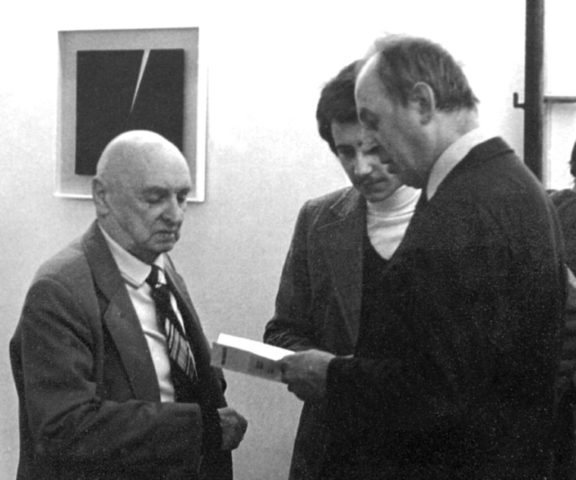
Sculptor, painter, author of spatial forms, artistic installations and happenings, Edward Krasiński was one of the most important protagonists of the Polish neo-avant-garde from the 1960s and ’70s. Born on March 3, 1925 in Łuck, in the province of Volhynia, he died in 2004 in Warsaw.
Edward Krasiński’s work is a very complex, ephemeral and elusive phenomenon. Its most important aspect is the very life of the artist and his creative attitude towards reality, which is expressed through “life in art”. He constantly influenced the world with his personality, irony, humour, undermining and challenging the traditional forms of art and its meanings. From 1940-42, he studied interior design and graphic design at the Kunstgewerbeschule (School of Arts and Crafts) in Kraków, and from 1945-48, he studied painting at the Academy of Fine Arts in Kraków under Władysław Jarocki, Wojciech Weiss, and Józef Mehoffer. During the occupation, he met the artists of the later Second Kraków Group (Tadeusz Kantor, Jerzy Nowosielski and Tadeusz Brzozowski).
In 1954, he moved to Warsaw and from 1966, he collaborated with the Foksal Gallery in Warsaw, which he helped establish with other artists, including Tadeusz Kantor and Henryk Stażewski. From 1970, he lived in the studio of Henry Stażewski with whom he became a lifelong friend. Krasiński is a Lifetime Achievement Award Winner (1998) of the Polish Section of the International Association of Art Critics(AICA) .
The works of Edward Krasiński are in the collections of, among others, Centre Georges Pompidou in Paris, the National Museum in Warsaw, Kraków and Wrocław, the Museum of Art in Łódź, the National Gallery in Prague and Museum of Modern Art in New York.

